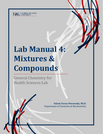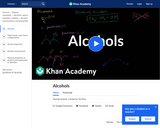
Discover how we name organisms in biology and microbiology. We also go over the taxonomy.
- Subject:
- Biology
- Life Science
- Material Type:
- Lecture
- Provider:
- Mr. Ford's Class
- Author:
- Scott Ford
- Date Added:
- 10/27/2014

Discover how we name organisms in biology and microbiology. We also go over the taxonomy.

This work consists of original content and adapted OpenStax content. Each image is attributed with the source page in the figure description, in accordance with each respective license. OpenStax content has been remixed into the “Theory and Background,” “Lab Examples,” and “Relations to Health Sciences” sections of this work. OpenStax remixing consists of rearrangement and minor instructional design augmentations. All other sections within this work are originally created content.

This resource is a video abstract of a research paper created by Research Square on behalf of its authors. It provides a synopsis that's easy to understand, and can be used to introduce the topics it covers to students, researchers, and the general public. The video's transcript is also provided in full, with a portion provided below for preview:
"Genomics research has greatly increased understanding of the human gut microbiome, but the existing reference databases remain insufficient, failing to map up to half of the sequences obtained in human gut studies. To solve this problem, researchers recently created HumGut, a comprehensive global reference database for the genomes of gut microbes in healthy humans. The researchers built the database by comparing nearly half a million publicly available prokaryote genomes with over 3,500 gut metagenomes from healthy humans worldwide, and retaining the prokaryote genomes that closely matched the sequences in healthy human guts. HumGut was approximately the same size as the recently released UHGG collection and half the size of a standard reference database. However, HumGut outperformed both other databases in classifying metagenomic reads from human gut samples, resulting in a lower percentage of unclassified reads..."
The rest of the transcript, along with a link to the research itself, is available on the resource itself.

This course covers the basic concepts of chemistry leading to an understanding of atomic structure of the elements and periodic table. The study of chemical bonding, nomenclature, chemical equations, formula calculations and stoichiometry is undertaken.

This 7-minute video lesson looks at naming alcohols. [Organic Chemistry playlist: Lesson 45 of 73].

An introduction to the diverse chemistry of carbon including basic hydrocarbon nomenclature.

Naming compounds is one of the most fudemental skills in general chemistry. Most likely you will be required to know naming rules for the reaminder of the semester! So how do you make sense of all of these rules? Take a look belwo for a systematic way to naming all basic general chemistry compounds. At the end of the module you should be able to...Idetify what time of bond a molecule conatinsDetermine the name from fromula for basic compoundsDetermine the formula form a name for basic compoundsAppropriately and correctly utilize the stock systemUtilize prefixes in naming basic organic compoundsCorresponding OpenStax Textbook Section 2.6, 2.7Types of BondsCovalent Naming RulesIonic Naming RulesPolyatomic Ion Naming RulesAcid Naming RulesIntroduction to Organic Naming